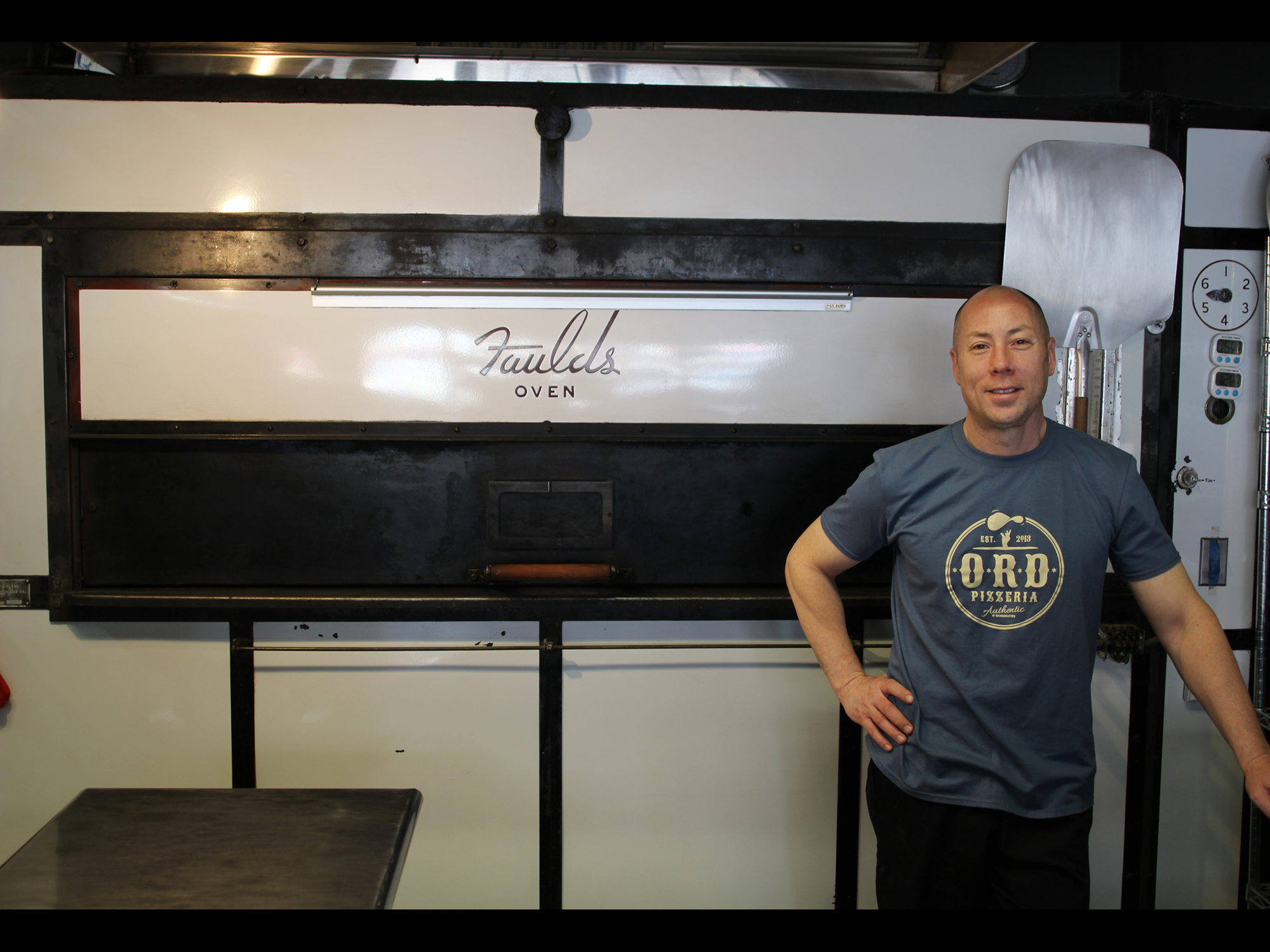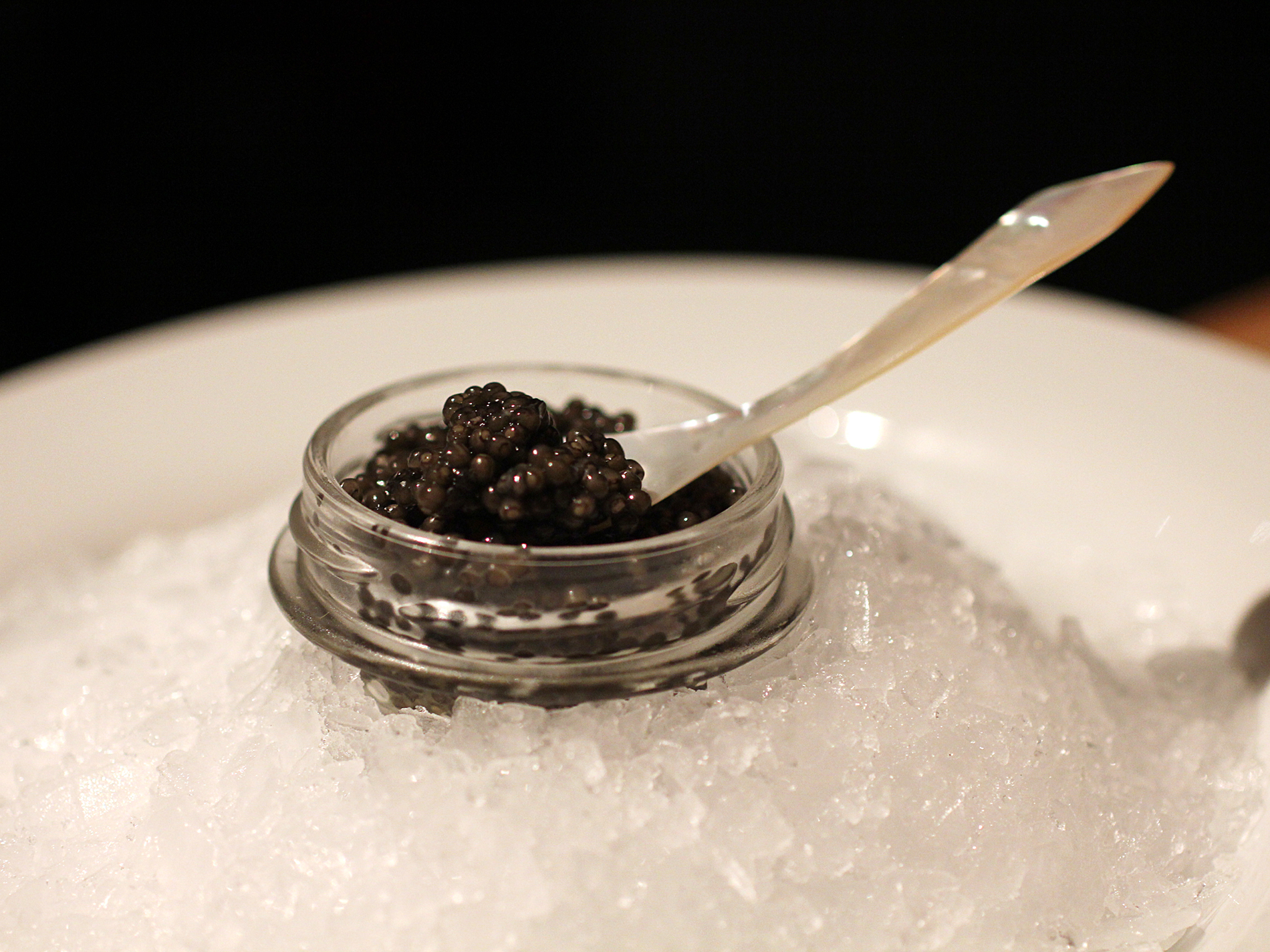MATT MIXTER, OWNER OF FROZEN SEAFOOD market Wixter Market, agrees that fresh fish is better than frozen. How fresh most of said fresh fish is, however, is where he takes issue.
“So many chefs just have it in their heads that fresh is better when it comes to fish and seafood,” he says. “I agree. But to what extent? On the third day? The fourth? The fact is, you’re typically getting it after that point.”

Wixter Market
Mixter’s 18-month-old shop at 2110 W. Division in Chicago specializes in flash- and super-frozen fish and seafood. Browsing his impeccable, modishly nautical Wicker Park store—lined with freezers neatly stacked with vacuum-sealed, rectangular fillets of salmon and mahi mahi, bags of shellfish, and minimalist shelves showcasing pretty tins of premium canned octopus and sardines—feels more like visiting a preserved seafood museum than a fish market.
But this isn’t your typical fish market. Here you’ll mostly find 8-ounce portions of fish that were flash-frozen within a few days of being caught. The shop also offers a handful of super-frozen (-76 degrees), sashimi-grade fish, like gleaming white hiramasa. So why flash-freeze fish?
“The way we see it, once the product has spent three or four days being fresh, it’s better to buy it flash frozen, because the state of that fish when you freeze it is exactly the state of fish you will get for the next 18 months,” Mixter says.
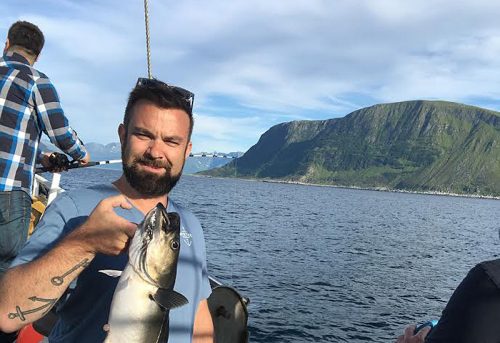 courtesy Matt Mixter
courtesy Matt Mixter Matt Mixter with friend
Unlike a traditional freezer, which takes anywhere 12 to 24 hours to freeze a piece of fish, flash-freezing gets it down to 0 degrees Fahrenheit in six hours or less, via cryogenic and mechanical freezing technology such as spiral freezers and individual quick-freezing (IQF) tunnel freezers. Once frozen, it has a shelf life of about 18 months.
“Freezing something really quickly limits amount of destruction to that product,” Mixter says. “Speed is extremely important to how damaging it is to the fish, but it’s not nearly as important as how fresh the product is when you freeze it.” All of Wixter’s products are filleted and frozen within 12 hours to three days of being caught.
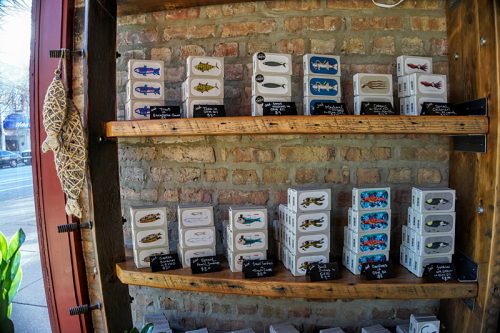
REGARDLESS OF OUR LANDLOCKED LOCALE, most of us hit up the fresh seafood counter at our neighborhood supermarket when we want to buy fish, browsing whole and filleted fish and shellfish packed on ice in sloping, glass-enclosed displays. Per Mixter, previously frozen fish comprises about three-quarters of the retail fish market.
“Fresh” denotes fish and seafood that’s anywhere from a few days to two weeks out of the water, depending on the species and where it was caught. Salmon, the No. 1 selling fish in the U.S., is typically six to 10 days old by the time it reaches the seafood case—still well within the 14-day range of when it should be eaten. But once it’s spent a few days in the case and brought home by us to sit for another day or two in our fridges before we cook it for dinner, it’s often well past its prime. And rather than tasting the fish itself, we’re probably tasting the “fishy” result of moisture loss.
“Like every living thing, most seafood is composed of a lot of moisture,” Mixter says. “Once it’s caught it immediately starts to lose moisture. The more it loses, the more oil, nutrients and flavor are lost as the microbiological components in the fish start to become rancid and taste and smell fishy. That’s why you hear a lot of people say they don’t like salmon because it’s too fishy.”
Mixter became a fan of flash-frozen seafood over a decade of working with Highland Park seafood importer Mazzetta Co., which exclusively sells flash-frozen seafood. He opened his Wicker Park shop last June as a passion project, filling what he saw as a hole in the retail marketplace for a more convenient fish-buying option for consumers that would cut down on waste both at the retailer and end buyer level and improve quality and overall consumer experience. (By day, he is the managing partner of Hofseth International, an importing and distribution company that represents a handful of large seafood production facilities in Norway, meaning Wixter is one of his customers.)
You get a lot of chefs who say that fresh is always better than frozen. That’s what they grew up with, and they couldn’t buy flash frozen products 10 years ago.
Dealing solely in frozen product has other benefits, too, such as eliminating the headache of seafood market price volatility. Because he’s able to buy so far ahead, Mixter can effectively bypass price swings in the market. If, say, the price of farmed salmon is going to be extraordinarily high for the next nine months due to algal bloom in Chile, Mixter can lock in nine months’ worth of volume at that lower price with product from Norway. (Atlantic salmon come from both countries, but Wixter doesn’t deal in salmon raised with antibiotics or GMOs—hence, why it buys from Norway.)
There’s also the somewhat staggering matter of the carbon footprint that’s used to fly in fresh-caught fish—which is roughly eight times the emissions of an ocean freighter, the transportation method Mixter uses for his extended-shelf-life fish.
“All these posh chefs talking about how awesome it is that they buy fresh product from New Zealand that came yesterday, they dumped carbon everywhere in the process,” Mixter says. “It doesn’t make sense, and it’s unjustifiably expensive.”
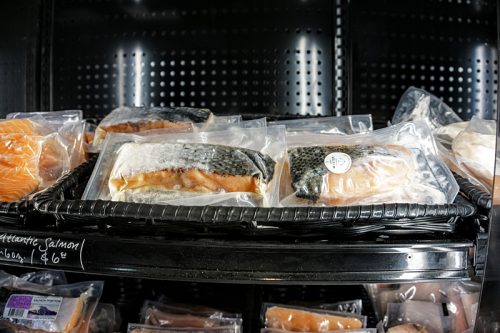
Wixter’s products should be thawed in the fridge overnight to best preserve the fish’s texture.
THE FROZEN THING SEEMS TO BE catching on. Business grew upward of 30 percent in Wixter’s first 12 months, which Mixter largely attributes to word of mouth. Roughly 75 percent of business comes from retail, with the remaining 25 generated from wholesale—made up of a mix of online sales and selling to distributors who sell the product to independent grocers like Olivia’s Market and Local Foods. These channels are helping Mixter prove out and scale his model.
“What we’ve done is consolidated the market, allowing smaller markets to give long-term consistent pricing on high-quality seafood products,” he says. “We’ve allowed other retailers to kind of latch onto our model that way.”
He’s betting on retail to remain his big growth engine though, and is currently scouting locations for a second shop, possibly in Park Ridge.
But it’s a long road ahead for the budding flash-frozen industry. “Fresh” still dominates in the minds of a lot of consumers when it comes to seafood. The still-nascent market also faces the uphill climb of a highly fragmented seafood industry when compared to the highly integrated markets of chicken, beef and pork. As such, the reach of new freezing technologies is currently limited to the few species that have undergone consolidation, which partly explains why you’ll find only staple fish and seafood products at Wixter, such as halibut, Chilean seabass, mahi mahi, Atlantic and wild sockeye salmon, shrimp, mussels and Norwegian Atlantic cod.
Moreover, Mixter’s message also hasn’t found a megaphone in arguably the most influential voices of the food industry: chefs.
The biggest drawback for them? “They can’t put ‘fresh’ on their menu,” he says. “You get a lot of chefs who say that fresh is always better than frozen. There’s just people who believe that. That’s what they grew up with, and they didn’t have the opportunity to buy flash frozen products 10 years ago. But a chef who’s 50 who’s been doing same thing since he was 25, to come in and convince him to buy frozen product is a lot more difficult than the guy currently going through culinary school now. But it’s still tough due to consumer perception.”
Perhaps if enough frozen retail fish shops open up by the time the next generation of chefs are opening their first restaurant, the fresh descriptor won’t be so important anymore.
Maggie Hennessy is a Chicago-based freelance food & drink writer and chef who likes real dive bars and bread with every meal. You can find her work in Chicago magazine, Bon Appetit’s City Guides, Thrillist, Restaurant Business, QSR magazine and the National Culinary Review. She’s also co-authoring the forthcoming Twisted Spoke cookbook with chef/owner Mitch Einhorn. Follow her latest at MaggieHennessy.com.
Latest
Join the Discussion
After you comment, click Post. If you're not already logged in you will be asked to log in or register with Disqus.





